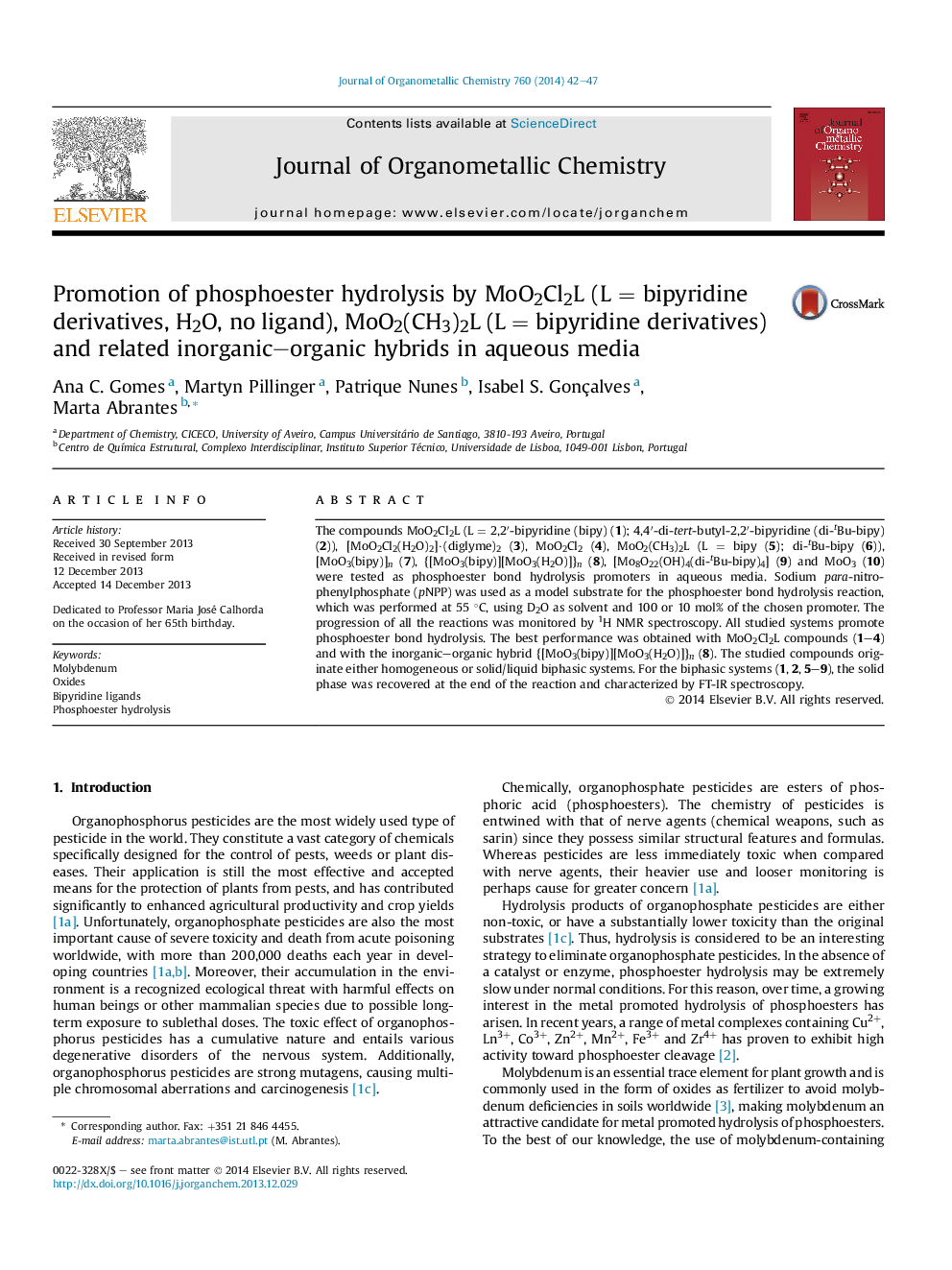| کد مقاله | کد نشریه | سال انتشار | مقاله انگلیسی | نسخه تمام متن |
|---|---|---|---|---|
| 1325557 | 1499880 | 2014 | 6 صفحه PDF | دانلود رایگان |

• MoO2X2L complexes and inorganic–organic hybrids promote phosphoester bond hydrolysis.
• The progression of all the reactions was monitored by 1H NMR spectroscopy.
• The best results were obtained with MoO2Cl2L complexes and {[MoO3(bipy)][MoO3(H2O)]}n.
• For biphasic systems, the solid phase was recovered and identified by IR spectroscopy.
The compounds MoO2Cl2L (L = 2,2′-bipyridine (bipy) (1); 4,4′-di-tert-butyl-2,2′-bipyridine (di-tBu-bipy) (2)), [MoO2Cl2(H2O)2]·(diglyme)2 (3), MoO2Cl2 (4), MoO2(CH3)2L (L = bipy (5); di-tBu-bipy (6)), [MoO3(bipy)]n (7), {[MoO3(bipy)][MoO3(H2O)]}n (8), [Mo8O22(OH)4(di-tBu-bipy)4] (9) and MoO3 (10) were tested as phosphoester bond hydrolysis promoters in aqueous media. Sodium para-nitrophenylphosphate (pNPP) was used as a model substrate for the phosphoester bond hydrolysis reaction, which was performed at 55 °C, using D2O as solvent and 100 or 10 mol% of the chosen promoter. The progression of all the reactions was monitored by 1H NMR spectroscopy. All studied systems promote phosphoester bond hydrolysis. The best performance was obtained with MoO2Cl2L compounds (1–4) and with the inorganic–organic hybrid {[MoO3(bipy)][MoO3(H2O)]}n (8). The studied compounds originate either homogeneous or solid/liquid biphasic systems. For the biphasic systems (1, 2, 5–9), the solid phase was recovered at the end of the reaction and characterized by FT-IR spectroscopy.
MoO2Cl2L, MoO2(CH3)2L and related inorganic–organic hybrids were tested as phosphoester bond hydrolysis promoters in aqueous media. The progression of all the reactions was monitored by 1H NMR spectroscopy. For biphasic systems, the solid phase was recovered at the end of the reaction and identified by FT-IR spectroscopy.Figure optionsDownload as PowerPoint slide
Journal: Journal of Organometallic Chemistry - Volume 760, 15 June 2014, Pages 42–47